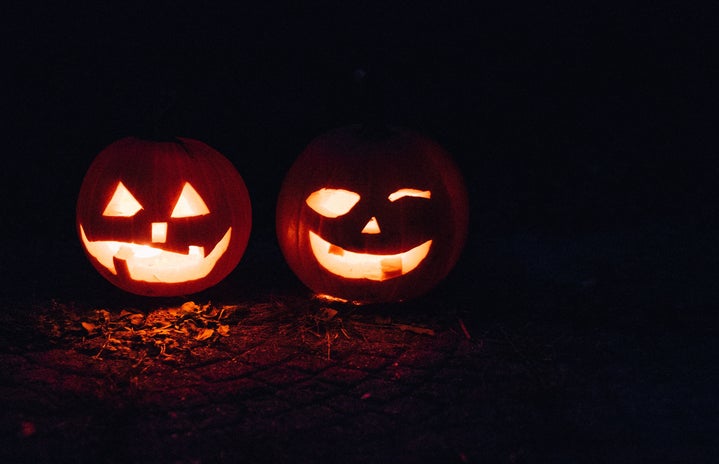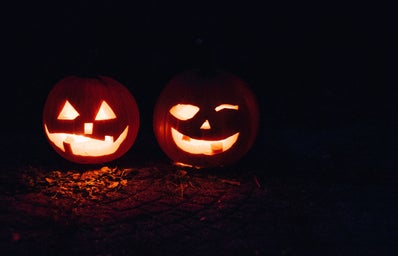Christmas has Santa Claus, and Easter has the Easter Bunny, but Halloween has a whole cast of monsters to serve as its mascots. From vampires to witches, mummies to werewolves, most Americans grow up with these figures on cereal boxes, in Halloween costume stores, and everywhere in between. We all know the names Count Dracula and Frankenstein before we know anything about their source material. But how did these particular monsters become so fixed in our cultural psyche, and how were our current pop culture representations of them created? Most of it can be traced back to just a few movies produced by Universal Pictures in the mid-20th century.
Universal, which is still one of the oldest movie studios in the country, first dabbled in monster movies during the twenties with their adaptations of Victor Hugo’s “The Hunchback of Notre Dame” [1] and Gaston Leroux’s “The Phantom of the Opera” [2]. But those “monsters” were, after all, only men. They didn’t delve into the supernatural until 1931’s “Dracula,” an adaptation of a hugely successful Broadway play, which was itself an adaptation of Bram Stoker’s hugely successful 1897 novel [3]. Stoker’s wealthy, intelligent Count is definitely an evolution of the vampires of Eastern European folklore, which weren’t much more than bloated corpses. But Dracula, as he’s described in Stoker’s novel, is also a far cry from our modern idea of the character: “a tall old man, clean-shaven save for a long white mustache…[with] eyebrows [that] were very massive…[and] hairs in the center of the palm” [4].
It was Bela Lugosi, a Hungarian actor who starred as Dracula both on Broadway and in the Universal film, who would become the character’s most iconic portrayal. He transformed the Count from a creepy old man to a suave, charming aristocrat, and his pale face, long cape, slick black hair, and heavily accented drawl have defined America’s archetypal vampire ever since.
“Dracula” was a huge hit for Universal, and they released another horror movie, “Frankenstein,” less than a year later. This, of course, was based on Mary Shelley’s 1818 novel. Like Dracula, Shelley’s creation bears little resemblance to Frankenstein’s monster as he exists in pop culture, and not just because we call the monster “Frankenstein” when that’s actually the name of the mad scientist who built him. Shelley describes the creature as having “yellow skin [which] scarcely covered the work of muscles and arteries beneath; his hair was of a lustrous black, and flowing; his teeth of a pearly whiteness…” [6] So how come Frankenstein’s monster is always portrayed now with a square head, bolts on his neck, and green skin? You guessed it – Universal’s version, starring Boris Karloff, became even more iconic than the novel. The movie is black and white, so he’s not technically green there, but the makeup artist reportedly used green makeup on Karloff to give him an eerie hue on camera, and the monster was green on many posters for the film and its sequels [7]. Universal is also responsible for changing Shelley’s smart, eloquent creature into a groaning, shuffling one. Many of the other essential parts of the tale, like the scientist using lightning to animate his experiment and shouting, “It’s alive!” come straight from the movie as well.
The Bride of Frankenstein, too, is a Universal creation. In the book, the bride doesn’t appear at all, since Victor Frankenstein destroyed his work on a mate for the monster before he completed it. The bride as we know her, with her iconic white-streaked hairstyle, comes entirely from 1935’s “The Bride of Frankenstein” [8], a direct sequel to the original film.
After the success of “Dracula” and “Frankenstein” Universal executives tried to find a novel that could form the basis for an Egyptian-themed horror movie. They decided to write their own story instead, inspired by the 1922 opening of King Tut’s tomb and its rumored curse. This developed into “The Mummy,” which was released in 1932 [10]. The film starred Boris Karloff as a revived Egyptian who stalks a woman he believes to be the reincarnation of his long-lost love. Americans and Europeans had long been fascinated with ancient Egypt, especially mummies, but this movie was the first time we saw the “monster mummy”.
Finally, Universal Pictures also left their mark on the werewolf legend. In most early European folklore, werewolves transformed into actual wolves, not the wolf-man hybrids we commonly see today. “Werewolf in London,” released in 1935, was the first film to feature an anthropomorphic werewolf and popularize the concept [12]. “The Wolf Man,” which wasn’t connected to “Werewolf in London,” came out in 1941 and was even more successful, promoting the werewolf to the ranks of Universal’s “classic” monsters [13]. Ancient folklore also didn’t specify that werewolves transformed during every full moon; the crossover “Frankenstein Meets the Wolf Man” was responsible for making this idea widespread.
Overall, it’s kind of amazing how just a handful of movies have had such a huge impact on pop culture. Universal Pictures single-handedly turned literary characters, an ancient burial custom, and old folklore into cultural icons that are so popular they’ve transcended even the movies themselves. Virtually every portrayal of Dracula and Frankenstein’s monster since the 1930s have been modeled after Lugosi and Karloff, not the novels’ descriptions. Mummies are only considered monsters at all due to their association with Universal. And several parts of the werewolf myth are common knowledge almost solely because of the studio.
There were definitely more Universal monster films produced during this time, but those particular characters are probably the most memorable. The movies may not be all that scary by modern standards, but they’re still quite spooky, and they are landmarks in the history of horror. The way they’ve shaped the American cultural landscape is pretty cool to see, and one thing’s for sure – Halloween wouldn’t be the same without them.
Sources
- https://www.rottentomatoes.com/m/1010214_hunchback_of_notre_dame
- https://www.rottentomatoes.com/m/1016240_phantom_of_the_opera
- https://www.filmsite.org/drac.html
- https://www.gutenberg.org/files/345/345-h/345-h.htm#CHAPTER_III
- https://giphy.com/gifs/animated-vampire-IDBtD9IImNIHe/links
- https://www.gutenberg.org/files/84/84-h/84-h.htm#chap05
- https://www.youtube.com/watch?v=N5L3Z7X4OUE
- https://www.rottentomatoes.com/m/bride_of_frankenstein
- https://giphy.com/gifs/black-and-white-film-NphAl8qAm0kuc/links
- https://en.wikipedia.org/wiki/The_Mummy_(1932_film)
- https://giphy.com/gifs/horror-monsters-classic-Q73ftgE78H0vS/links
- https://en.wikipedia.org/wiki/Werewolf_fiction
- https://www.rottentomatoes.com/m/wolf_man
- https://giphy.com/gifs/reaction-mood-BctJSQOUpXQle5PUku/links


